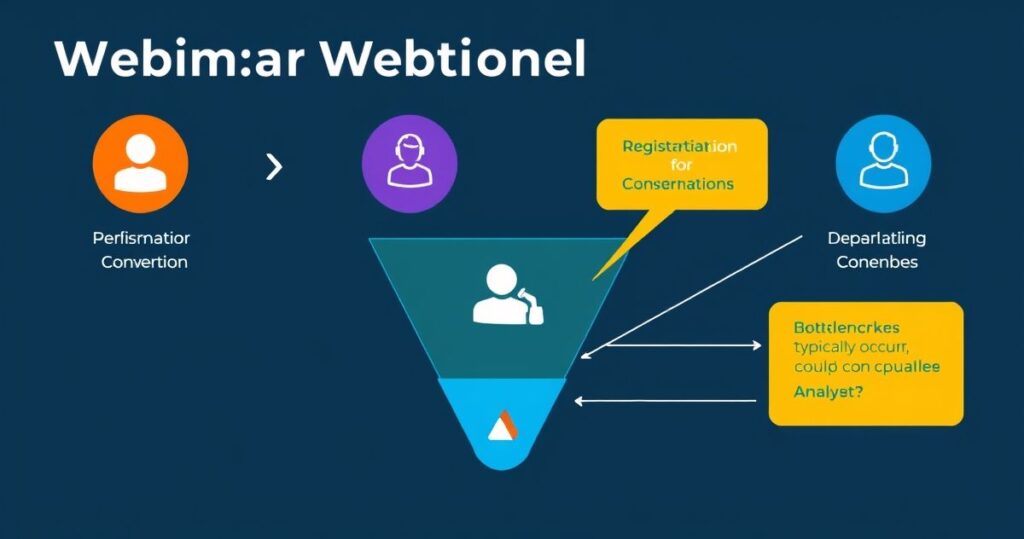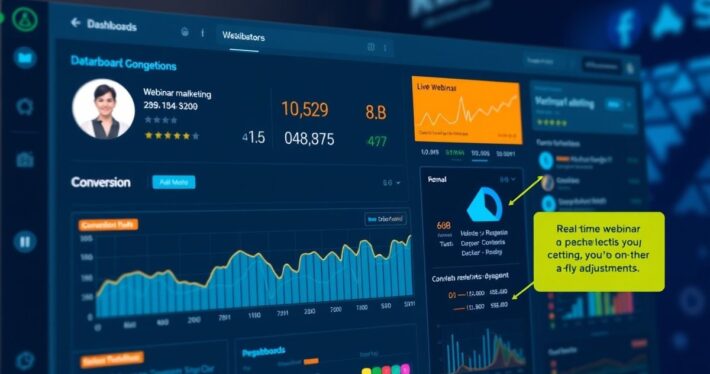Webinar Funnel Analytics: Identifying Bottlenecks

Webinars are one of the most effective tools for lead generation and sales conversion—but only if your funnel is optimized. The reality is, even the most polished webinar can fall flat if there’s a leak in your funnel. That’s where webinar funnel analytics comes in. By identifying bottlenecks, you can pinpoint exactly where attendees are dropping off and take action to fix the problem.
In this guide, we’ll break down how to analyze your webinar funnel, identify common bottlenecks, and implement strategies to boost conversions. Whether you’re a seasoned marketer or just dipping your toes into the webinar world, this is your roadmap to maximizing ROI.
What Is Webinar Funnel Analytics?
Let’s start with the basics. Webinar funnel analytics is the process of tracking and analyzing the attendee journey from registration to post-webinar action. Think of it as a fitness tracker for your webinar strategy—it tells you where you’re strong and where you need to improve.
A typical webinar funnel has several stages:
- Registration (getting people to sign up)
- Attendance (getting registrants to actually show up)
- Engagement (keeping attendees hooked during the webinar)
- Conversion (getting attendees to take the desired action, like purchasing or booking a call)
Each stage has its own metrics, and by analyzing them, you can uncover bottlenecks that are killing your conversions.
Why Are Bottlenecks Such a Big Deal?
Imagine this: You’ve spent weeks crafting the perfect webinar, you’ve got a solid audience, and registrations are pouring in. But when it’s time for the webinar, only 40% of registrants show up. And of those attendees, just 10% take the desired action.
Ouch, right?
Bottlenecks are like traffic jams—they slow everything down and cost you opportunities. By identifying and removing them, you can create a seamless attendee journey that converts at every stage.
Common Webinar Funnel Bottlenecks (and How to Fix Them)
Let’s dive into the most common bottlenecks and actionable solutions.
1. Low Registration Rates
If you’re struggling to get registrations, the problem often lies in your messaging or targeting.
- The Fix:
- Use AI tools like our Slide Outline Creator to craft compelling content that resonates with your audience.
- A/B test your landing page headlines, copy, and call-to-action (CTA) buttons.
- Leverage paid ads or email marketing to reach a broader, more targeted audience.
Real-World Example: A SaaS company increased registrations by 25% simply by tweaking their landing page headline from “Learn About Our Software” to “Transform Your Workflow in 30 Minutes.”
2. Low Attendance Rates
If registrants aren’t showing up, it’s usually a sign of poor reminders or lack of urgency.
- The Fix:
- Send multiple reminders via email, SMS, and calendar invites.
- Use scarcity tactics like “Limited seats available” or “Last chance to register.”
- Create a teaser video or infographic to build anticipation.
Pro Tip: Our Webinar Offer Builder can help structure your messaging to emphasize value and urgency.
3. Low Engagement During the Webinar
If attendees are tuning out, your content might be falling flat.
- The Fix:
- Use interactive elements like polls, Q&A sessions, and chat features.
- Break up your presentation with visuals, stories, and real-world examples.
- Keep your slides concise and focused—our Slide Outline Creator can help here.
Let’s Be Honest: No one wants to sit through a 60-minute sales pitch. Focus on delivering value first, then transition to your offer.
4. Low Post-Webinar Conversion Rates
If attendees aren’t taking action, your offer or CTA might not be compelling enough.
- The Fix:
- Use our High-Value Bonus Brainstormer to create irresistible bonuses that make your offer a no-brainer.
- Implement risk-reversal tactics like a money-back guarantee—our Risk-Reversal/Guarantee Generator can help here.
- Follow up with a series of emails or retargeting ads to nurture leads.
Real-World Example: A fitness coach increased conversions by 40% by adding a 30-day money-back guarantee and a free workout plan bonus.
Tools to Supercharge Your Webinar Funnel Analytics
While manual tracking can work, using the right tools can save you time and provide deeper insights. Here’s a quick comparison of some essential tools:
| Tool | Key Feature | Ideal For |
|---|---|---|
| AI Slide Outline Creator | Balances education and engagement | Crafting compelling webinar content |
| Webinar Offer Builder | Structures pricing and value stacks | Creating irresistible offers |
| Bonus Brainstormer | Generates high-value bonus ideas | Boosting post-webinar conversions |
| Guarantee Generator | Creates risk-reversal tactics | Making your offer feel safe |
Practical Steps to Analyze Your Webinar Funnel
Ready to dive in? Here’s a step-by-step process to analyze your webinar funnel:
-
Set Up Tracking
Use tools like Google Analytics, CRM integrations, or webinar platform dashboards to track metrics at each stage. -
Review Metrics
Look for patterns or significant drop-offs. For example, if 90% of registrants aren’t attending, focus on reminders and urgency. -
Test and Optimize
Implement changes based on your findings and measure the impact. -
Repeat
Funnel optimization is an ongoing process. Regularly review your data to stay ahead of bottlenecks.
Final Thoughts: Make Analytics Work for You
Webinar funnel analytics isn’t just about numbers—it’s about understanding your audience and delivering a seamless experience. By identifying bottlenecks and taking action, you can transform your webinar strategy into a conversion powerhouse.
And here’s the kicker: You don’t need to be a data scientist to do it. With the right tools and mindset, anyone can master webinar funnel analytics.
So, what’s your first step? Start by reviewing your last webinar’s metrics. Where did attendees drop off? What could you do differently? Remember, every bottleneck you fix is a step toward higher conversions and greater success.
Now, go forth and optimize those funnels!



